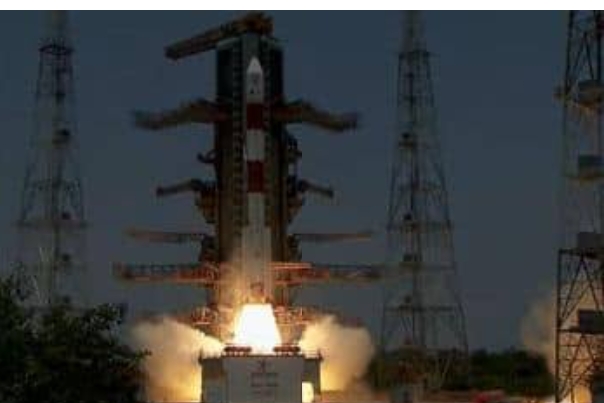online desk : yet another monumental achievement, India’s space agency, the Indian Space Research Organization (ISRO), has embarked on a mission to unlock the secrets of the Sun. On a bright Saturday morning at 11:50 a.m., the nation watched in awe as the Aditya-L1 spacecraft lifted off from the Satish Dhawan Space Research Center in Sriharikota, Andhra Pradesh.
This historic moment comes just days after ISRO’s successful Chandrayaan-3 mission touched the lunar surface, marking India’s third lunar endeavor. Now, the nation turns its gaze toward the Sun, as Aditya-L1 becomes India’s first spacecraft aimed at our closest star.
The spacecraft, named after another moniker for the Sun, Aditya, is destined for a unique position known as the Lagrangian point, or L, in a ‘halo’ orbit situated between the Sun and Earth, roughly 1.5 million kilometers away. Its journey to this point will span approximately 120 days.
Aditya-L1’s primary mission is to collect crucial data about the Sun’s atmosphere, weather, and its impact on space. After its initial launch, the spacecraft will spend approximately 16 days orbiting Earth, gradually accelerating through five stages before setting its course toward the Sun. For the following 110 days, it will observe the Sun from a safe distance within this Lagrange point.
This mission promises to provide invaluable insights into the mysteries of our star, thanks to the unique characteristics of this Lagrange point, where the gravitational forces of the Sun and Earth balance, allowing artificial satellites to remain stationary. As Aditya-L1 begins its journey towards the Sun, India’s scientific community and the world at large eagerly anticipate the discoveries and knowledge it will bring back. India’s foray into solar exploration marks another significant step forward in the nation’s space endeavors and underscores its commitment to advancing our understanding of the cosmos. Aditya-L1 is set to shine a light on the enigmatic Sun, bringing us closer to comprehending the complexities of our solar system’s central celestial body.








